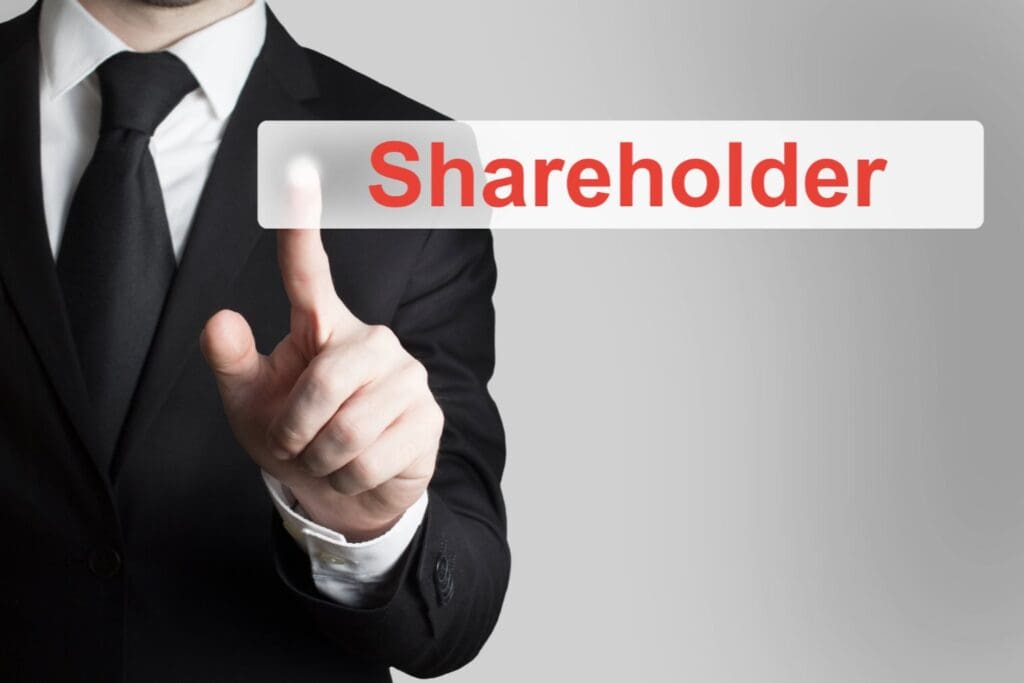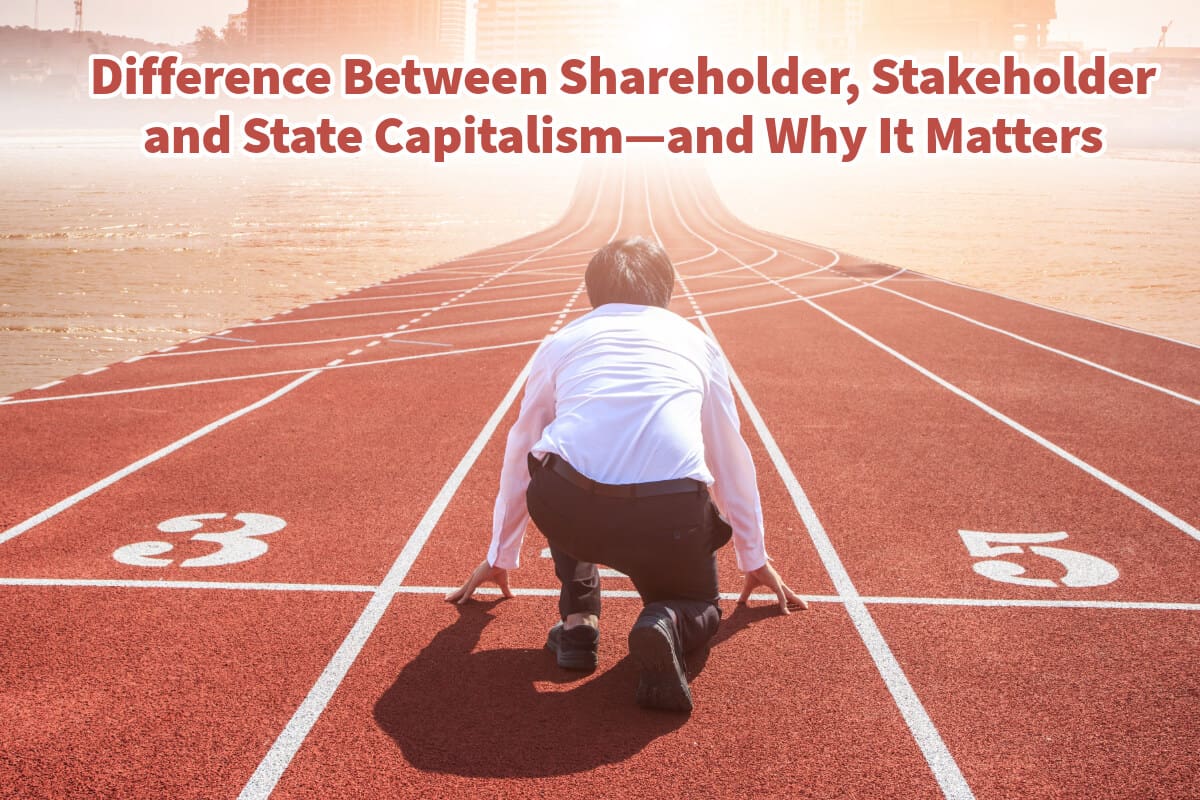The world of capitalism is not monolithic. Different economic and business models operate under the broader umbrella of capitalism, each with unique goals, strategies, and implications.
Shareholder, stakeholder, and state capitalism are key approaches significantly influencing how businesses operate, grow, and contribute to society. Understanding these differences is not just an academic exercise—it has practical implications for businesses, governments, and individuals. Moreover, each model has its moral obligations that define how organizations should approach ethical decision-making and their responsibility to society.
Table of Contents
- Understanding the Difference Between Shareholder Capitalism, Stakeholder Capitalism, and State Capitalism—and Why It Matters
- Key Differences Between the Models
- Why Understanding These Differences Matters
- The Moral Implications of Capitalism Models
- Choosing the Right Path Forward
- Final Thoughts
- Related Content
Understanding the Difference Between Shareholder Capitalism, Stakeholder Capitalism, and State Capitalism—and Why It Matters
Read on as we will explore the distinctions between these three models—shareholder Capitalism, Stakeholder Capitalism, and State Capitalism—and explain why comprehending these differences is critical for businesses and societies in today’s complex world.
What Is Shareholder Capitalism?
Shareholder capitalism is the traditional model of capitalism most familiar to businesses in Western economies, particularly the United States. Under this model, a business’s primary objective is to maximize shareholder value.

Key Characteristics:
- Profit Maximization: The company’s primary goal is to generate the highest possible returns for its shareholders.
- Short-Term Focus: Decisions are often driven by quarterly earnings and stock performance.
- Limited Scope of Responsibility: Businesses focus primarily on financial metrics, with less emphasis on social or environmental concerns.
Moral Obligations in Shareholder Capitalism
While shareholder capitalism emphasizes profitability, it does not absolve companies of moral responsibility. Companies in this model have an obligation to:
- Operate transparently and ethically to build trust with investors and consumers.
- Comply with laws and regulations to ensure fair competition.
- Consider long-term sustainability to protect shareholder investments.
However, critics argue that if profit becomes the sole priority, this model can lead to short-sighted decision-making, environmental degradation, and social inequality.
What Is Stakeholder Capitalism?
Stakeholder capitalism shifts the focus from shareholders to all stakeholders involved in or impacted by a company’s operations. These stakeholders include employees, customers, suppliers, communities, and the environment.
Key Characteristics:
- Broad Objectives: Companies aim to balance the needs of all stakeholders, not just shareholders.
- Sustainability: There is a strong emphasis on environmental, social, and governance (ESG) factors.
- Long-Term Focus: Decisions are made toward sustainable growth and societal well-being.
Moral Obligations in Stakeholder Capitalism
The moral obligations of stakeholder capitalism are more expansive, as businesses must:
- Uphold social responsibility: Businesses must address climate change, inequality, and community welfare.
- Support employees: Fair wages, career development, and workplace diversity are essential.
- Foster trust: Companies must engage transparently with all stakeholders and work collaboratively toward mutual benefits.
Stakeholder capitalism has gained momentum in recent years, mainly as global challenges like climate change and social inequality demand collective action.
What Is State Capitalism?
State capitalism is an economic model where the government plays a central role in the ownership and operation of businesses. In this system, the state acts as the primary driver of economic activity, often with strategic national interests in mind.

Key Characteristics:
- Government Ownership: Key industries, such as energy, telecommunications, or defense, are typically state-owned.
- Strategic Goals: Businesses operate to achieve economic or political objectives, not solely profit.
- Market Control: The state significantly influences market dynamics, often prioritizing stability over competition.
Moral Obligations in State Capitalism
The moral obligations of state capitalism revolve around serving the public good. Governments and state-run businesses are expected to:
- Promote equality: Reduce income inequality and ensure that basic needs are met for all citizens.
- Serve national interests: Focus on long-term economic stability and strategic development.
- Prevent corruption: Operate with transparency to ensure public trust and prevent misuse of resources.
Critics of state capitalism point out that when governments prioritize control over economic freedom, this can lead to inefficiencies, a lack of innovation, and potential abuse of power.
Key Differences Between the Models
Understanding the distinctions between these three models is crucial for businesses, policymakers, and society.
Below is a comparative breakdown of the key differences:
| Feature | Shareholder Capitalism | Stakeholder Capitalism | State Capitalism |
|---|---|---|---|
| Primary Objective | Maximize shareholder value | Balance interests of all stakeholders | Serve national or strategic goals |
| Decision Drivers | Profit and stock performance | Sustainability and social impact | Government policy and national interest |
| Ownership | Private shareholders | Private shareholders | Government or state entities |
| Scope of Responsibility | Narrow (financial returns) | Broad (social, environmental, and financial) | National and public interests |
| Criticism | Can prioritize profit over ethics | Can dilute focus and accountability | Risk of inefficiency and overreach |
Why Understanding These Differences Matters
Understanding the differences between each of these capitalist models matters for many reasons. Here are some of our top reasons.
1. Strategic Business Decisions
For businesses, understanding which model they operate under—or the model prevalent in their industry or region—affects strategy. For example:
- A company in a shareholder capitalism system may prioritize mergers and acquisitions to boost stock prices.
- A stakeholder-driven company might invest in renewable energy to align with environmental goals.
- A state-owned enterprise may focus on national infrastructure projects instead of profit.
2. Global Market Dynamics
As businesses increasingly operate globally, they interact with economies that follow different models. For example:
- Companies expanding into China must navigate state capitalism, where government influence is significant.
- Stakeholder capitalism is more prevalent in Europe, emphasizing social and environmental responsibility.
Understanding these dynamics helps businesses adapt and succeed in diverse markets.
3. Corporate Responsibility
Each model comes with distinct expectations for corporate responsibility. Stakeholder capitalism requires a broader commitment to societal issues, while shareholder capitalism often prioritizes financial transparency. Businesses must align their practices with these expectations to maintain trust and legitimacy.
4. Policy and Regulation
Governments craft policies and regulations that align with their preferred model. For instance:
- State capitalism may involve subsidies or tariffs to protect national industries.
- Stakeholder capitalism might push for stricter environmental regulations.
- Shareholder capitalism could see tax incentives to promote investment.
Businesses must understand these frameworks to navigate compliance effectively.

The Moral Implications of Capitalism Models
Beyond business strategy, the differences between these models have significant moral implications. How businesses and governments allocate resources, prioritize goals, and address societal issues reflects their underlying values.
1. Shareholder Capitalism: Balancing Profit and Ethics
The moral challenge of shareholder capitalism is balancing profit and ethical responsibility. While generating returns for investors is important, companies must avoid sacrificing long-term sustainability or exploiting workers and the environment.
2. Stakeholder Capitalism: The Greater Good
Stakeholder capitalism embodies a more holistic moral framework, emphasizing the greater good over individual profit. However, this can dilute accountability as companies juggle competing stakeholder demands.
3. State Capitalism: Serving the Public Interest
State capitalism carries the heaviest moral obligation, as governments serve the public. The risk lies in the potential misuse of power, where corruption or political agendas overshadow the needs of citizens.
Choosing the Right Path Forward
Understanding the nuances of these models is essential for making informed decisions for business leaders, policymakers, and individuals. Each system has strengths and weaknesses; the right approach often depends on the specific context and goals.
For Businesses:
- Adopt a hybrid approach: Many businesses are finding success by blending shareholder and stakeholder capitalism elements. For example, pursuing profits while prioritizing ESG initiatives can create long-term value.
- Adapt to local contexts: When entering new markets, align your strategy with the prevailing model to ensure smooth operations.
For Policymakers:
- Promote balance: Create policies encouraging ethical behavior and social responsibility without stifling innovation or economic growth.
For Individuals:
- Stay informed: As consumers and employees, understanding these models helps you make decisions that align with your values, whether supporting sustainable brands or advocating for workplace fairness.
Final Thoughts
The differences between shareholder, stakeholder, and state capitalism go far beyond theoretical concepts—they shape how businesses operate, how governments regulate, and how societies function. By understanding these distinctions and their moral obligations, we can work toward building systems that balance profitability, sustainability, and social equity.
At Mondoro, businesses are responsible for contributing positively to society, regardless of the economic model they follow. By embracing the best practices of each system, we can create a world where businesses thrive while making a meaningful impact.
Find out more about how Mondoro can help you create, develop, and manufacture excellent home decor and home furniture products – don’t hesitate to contact me, Anita. Check out my email by clicking here or become a part of our community and join our newsletter by clicking here.
Mondoro gives out a FREE Lookbook to anyone interested. You can receive a copy of our latest Lookbook by clicking here.
Listen to our Podcast called Global Trade Gal. You can find it on all major podcast platforms. Try out to listen to one of our podcasts by clicking here.
Subscribe to our Mondoro Company Limited YouTube Channed with great videos and information by clicking here.
Related Content
An Efficient Supply Chain And How To Improve It
An efficient supply chain is a supply chain that functions and operates and does so at the most optimal level possible. An efficient supply chain can excel at getting products or services ordered, shipped, and to the end purchaser in the most efficient way possible.
You can discover more by reading An Efficient Supply Chain And How To Improve It by clicking here.
How Do Information Systems Support The Supply Chain?
Information systems and the information we can obtain are critical in any supply chain; we must have and use accurate information to make correct decisions.
You can discover more by reading How Do Information Systems Support The Supply Chain? by clicking here.
What Is The Difference Between Supply Chain Management and Logistics?
Supply chain management is about the collaboration and partnerships to get the goods from raw material to the end consumer; it is about the partnerships and alliances within this process. Logistics is one part of supply chain management; logistics involves moving goods from one place to another.
To learn more about loading a dry shipping container, you can read our blog on What Is The Difference Between Supply Chain Management and Logistics? by clicking here.

